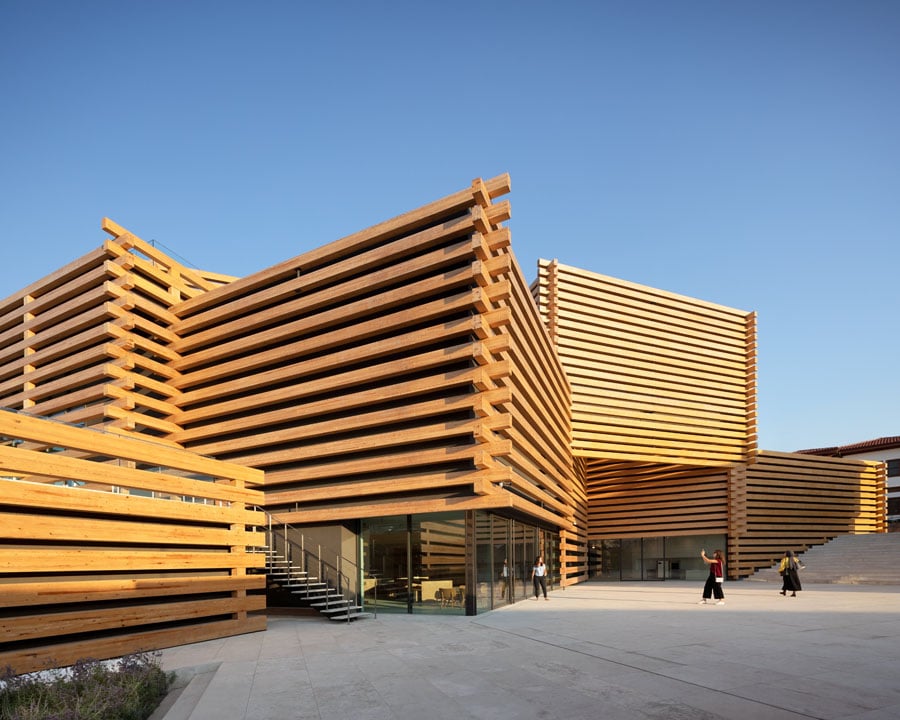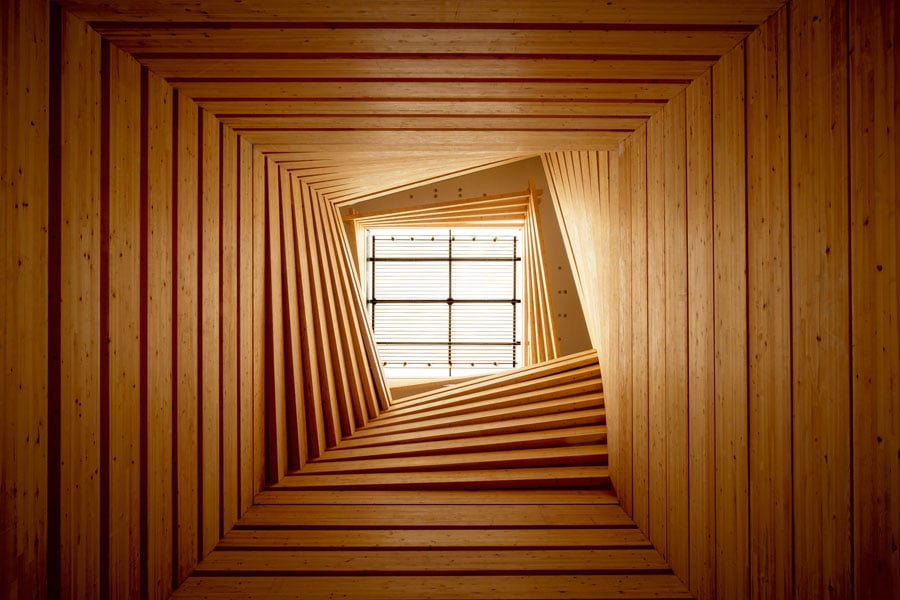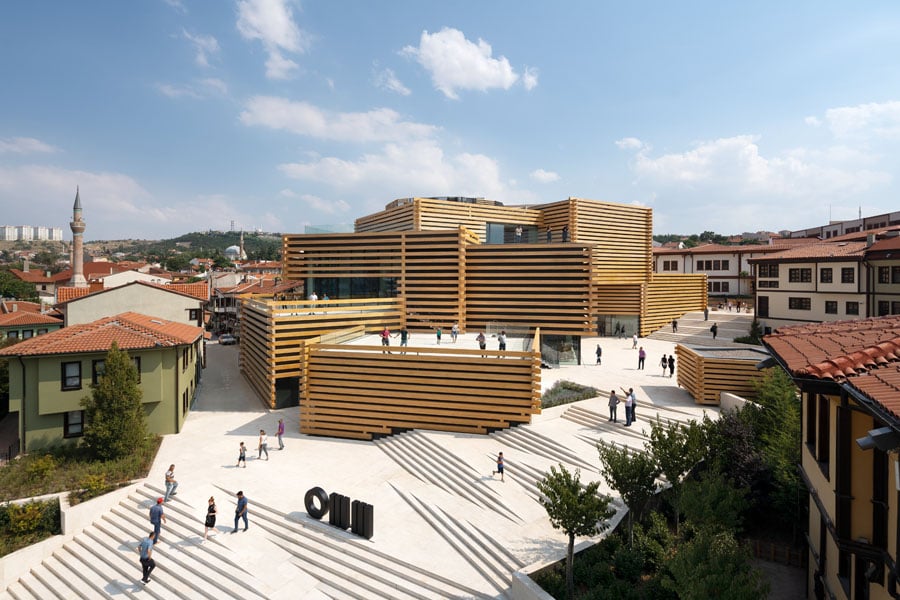
October 17, 2019
Ottoman Architecture Inspires Kengo Kuma’s Contemporary Art Museum in Turkey
The Odunpazarı Modern Museum draws from the traditional wooden houses of Eskişehir, a university town with high hopes of becoming an arts hub.

In Odunpazarı, a neighborhood in Eskişehir, Turkey, narrow streets wind gently below the overhanging second-floor bay windows of traditional Ottoman houses. Dating back to the 18th century, these distinctive features expanded the home’s living space while allowing residents to look out at the street without being closely observed.
Now, Kengo Kuma and Associates have reinterpreted this vernacular for a new contemporary art museum, where the architecture riffs on the surrounding neighborhood’s historic texture. “The upper-level cantilever came out of the desire for privacy, but made the streetscape very unique,” says architect Yuki Ikeguchi, the firm’s lead partner on the project.
The Odunpazarı Modern Museum (OMM), which opened to the public on September 8, sits at the point where those meandering streets tumble down into the modern city center—and was designed to feel like an extension of them. The 11 stacked and interlocked boxes that make up the structure jut out at different angles, their slatted yellow-pine exterior alluding to the latticework screens that often covered Ottoman-era bay windows. (This preponderance of wood is also a nod to the name of the neighborhood, which means “wood market” in Turkish.)

“The city of Eskişehir has a more human scale and a softer texture than Istanbul, which is known for its heavy stone buildings like the Aya Sofya, and we wanted that reflected in this building,” says architect Kengo Kuma. Those design ideas carry into the interior of the museum, where soft light filters into exhibition spaces of assorted shapes and sizes. These range from a towering gallery (currently housing a monumental bamboo sculpture commissioned from Japanese artist Tanabe Chikuunsai IV) to an intimate, cave-like space under the entrance stairs where a cheeky video piece by Universal Everything marches across the wall.
The varied spaces made putting together the inaugural exhibition a “very dynamic process,” says curator Haldun Dostoğlu. OMM has no permanent curator, so Dostoğlu—who is associated with Galeri Nev in Istanbul—was invited to curate the first show from museum founder Erol Tabanca’s private collection, which is comprised primarily of works by Turkish contemporary artists from 1948 to the present day. Having made his fortune in the construction industry, Tabanca commissioned the museum as a way to showcase his collection and spur the growth of an arts scene in his home city, a university town that has built a reputation for forward-thinking urbanism.

“As well as a museum, OMM is a platform for artists of the future to make their voices heard,” says İdil Tabanca, the founder’s daughter, who serves as OMM’s chairperson and creative director. The museum shop sells works by local artisans, and a new OMM Residency will bring in artists from around the world for three-month stints, pairing them with local artists and holding open studios for curators, critics and museum visitors.
“OMM is part of a global trend of opening museums outside of metropolises,” says curator Dostoğlu. “It is contributing to a sense of new possibilities, a positive spirit around art in Turkey.”
You may also enjoy “Berlin’s Futurium Shines a Sophisticated Light into a Drab Corner of the City”
Would you like to comment on this article? Send your thoughts to: [email protected]













